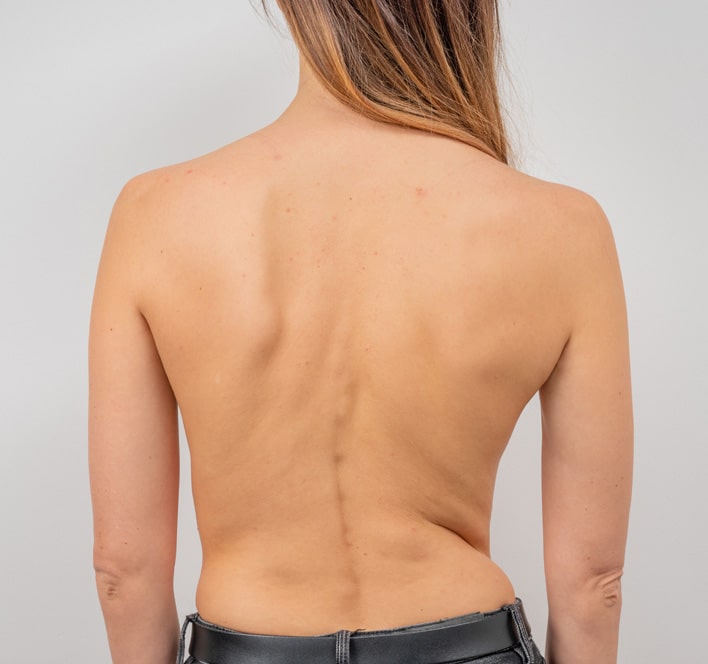Scoliosis is a condition that causes the spine to curve sideways and is mostly diagnosed in adolescent kids. About 2-3% of the American population has scoliosis. Although the cause of scoliosis is unknown, especially in children, many myths surround this condition.
Though most of the myths about scoliosis are harmless, there are a few which can be dangerous. This is because some of these scoliosis myths and misinformation have somehow even fooled some physicians, which can lead them to make wrong recommendations to their patients. Here at NJ Spine & Orthopedic, we have prepared this article to help debunk and fact-check some of the five most dangerous scoliosis myths. Keep reading to learn more.
5 Dangerous Myths About Scoliosis
Some dangerous myths that you should know about scoliosis include:
1. You Can Prevent Scoliosis
Many parents whose children are diagnosed with scoliosis always wonder if there is something they could have done to prevent the condition.
The fact: There is no adequate research or clinical trial that proves scoliosis can be prevented.
First, the cause or the origin of scoliosis is unknown. Therefore, it’s impossible to prevent something whose cause is unknown. Myths, such as sitting upright can prevent scoliosis, are mere misinformation.
While there is ongoing research to pinpoint the cause of scoliosis, parents should get their children screened as soon as they notice any signs and symptoms. Early diagnosis and treatment may help correct the curve or slow its progression.
2. Scoliosis Treatment is Optional
There is still a general belief in the general public that scoliosis is just another cosmetic condition and treatment is optional, especially if someone doesn’t experience scoliosis pain.
The fact: Though most scoliosis cases are mild, the condition can progress fast in some children or worsen in adulthood and cause catastrophic health problems.
Apart from affecting one’s physical posture and self-confidence, there are many other issues associated with scoliosis, especially its severe form. According to the National Scoliosis Foundation, the condition can cause the patient to experience symptoms of headache, chronic back pain, difficulty breathing, and other chronic diseases. Scoliosis can also tamper with normal body development and height.
With these facts, it is clear that scoliosis treatment is not optional. If you or your loved one has been diagnosed with scoliosis, it’s prudent to discuss a treatment plan with your spine and orthopedic doctor and start early treatment.
3. Wait and Watch Before Treating Scoliosis
Some people, even physicians, may recommend you wait and watch your scoliosis before starting treatment. Though this may be the case in the early stages of mild scoliosis, waiting and watching while doing nothing about the condition isn’t recommended.
The fact: “Wait and watch” is not a good strategy for someone with scoliosis. The condition might worsen over time.
A good plan is to discuss with your spine specialist a treatment plan as soon as you or your child is diagnosed with scoliosis.
Another reason you shouldn’t subscribe to the “wait and watch” myth is because of modern medicine and technology. That strategy might have been promising some decades ago. But with high-tech technology and modern medical science (such as minimally-invasive surgeries), you can be confident that doctors have more know-how and better treatment plans for scoliosis than ever before.
4. Scoliosis Stops Developing in Adulthood
Many people have the misconception that scoliosis cannot worsen after the child stops growing. This is because scoliosis is closely associated with growth, especially in adolescent children. Therefore, people assume it stops after adolescence.
The fact: Scoliosis can worsen even after childhood and progress into adulthood
Ligaments in the spine weaken as we age, which causes the spine to lose stability. Therefore, it’s not a good idea to wait for your child to stop growing and see whether scoliosis will progress. Treatment may help correct your scoliosis.
5. Surgery to Correct Scoliosis is Very Dangerous and Risky
Many people consider surgery to correct scoliosis unavailable because of the misinformation surrounding the topic. There is even a myth that scoliosis is a guarantee of pain and deformity.
The Fact: Modern minimally-invasive surgeries that use the latest discoveries and breakthroughs in science and medicine are often safe for scoliosis treatment.
Though every surgery involves its risk, which you should discuss with your doctor, modern surgeries to correct spinal deformities are often safer than traditional invasive ones. Minimally-invasive surgeries involve minimal blood loss and less traumatic techniques.
Talk With a Spine Treatment Expert Today
Doctors at NJ Spine & Orthopedic have decades of combined experience in minimally invasive spine treatment. Our minimally-invasive surgery techniques can help you get the treatment you need. Our Concierge Team can help you put together all aspects of your appointment to help reduce stress as well, such as coordinating travel plans or helping obtain medical records.
Minimally-invasive surgery also shortens the recovery period, allowing patients to return to normal life and work faster. Contact us online today or call us at (866) 553-0612. We’re ready to help you or your child recover as soon as possible.

